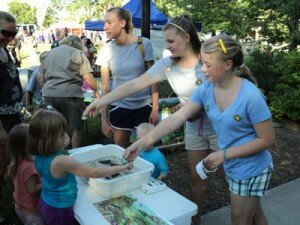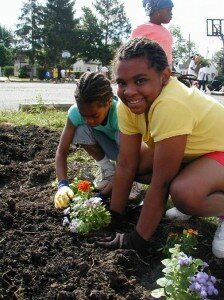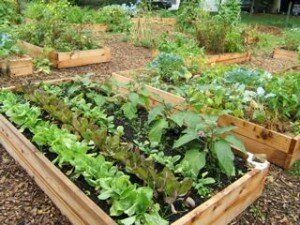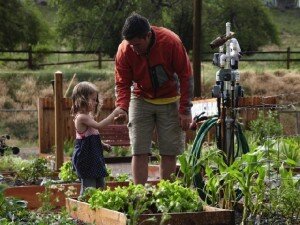 July is a month full of fun in the sun, vacation destinations, and backyard barbecues. Any wonder why it is Anti-Boredom Month, we think not!
July is a month full of fun in the sun, vacation destinations, and backyard barbecues. Any wonder why it is Anti-Boredom Month, we think not!
If you are actually bored this summer, choosing to do a volunteer project is the best way to combat it! Celebrate July’s anti-boredom theme by being proactive within your community. Check out our volunteer ideas below to get started!
- Become a certified lifeguard. Becoming a lifeguard is a great summer job, plus you are really helping out your community by ensuring safety.
- Organize a volley ball game in your neighborhood. Proceeds benefit a local nonprofit.
- Teach your child the valuable skill of swimming. Drowning is the second leading cause of childhood death.
- Hold a school supply drive for the upcoming school year.
- Teach a swimming lesson class for kids in your neighborhood.

- Make art for a hospital or retirement home.
- Volunteer at a senior center’s bingo night.
- Volunteer at the zoo or animal shelter.
- Educate community members about the dangers of heat related injuries.
- Volunteer as a summer camp counselor.
- Volunteer to be a dog walker for your busy neighbors.
- Adopt a grandparent or mentor a younger child.
- Hold a teacher appreciation luncheon.
- Hold a book drive for summer reading materials.
- Perform a free concert in your local park.
- Help a prospective college student prepare for their SAT.
- Clean up your local park or river.
- Establish a nature preserve in your community.
- Start a community garden full of summer fruits and veggies.
- Babysit a busy parent’s children for free so that they can finish other obligations.
- Clean a bed-ridden neighbor’s home.
- Volunteer to buy groceries for a family in need.
- Volunteer to be a part of a beach cleanup.
- Hold a car wash and donate your profits to a nonprofit in your community.
- Volunteer to cut a neighbor’s lawn or clean their pool.
 You can beat your summer boredom through so many different volunteer activities. Volunteering will not only benefit you, but also your community. By giving back, you will not only feel less boredom, but you will also be in a much better mood!
You can beat your summer boredom through so many different volunteer activities. Volunteering will not only benefit you, but also your community. By giving back, you will not only feel less boredom, but you will also be in a much better mood!
Get out in that summer sun and volunteer this month to better your community! You never know the opportunity that awaits you!
How are you volunteering this summer? We would love to hear about your projects in the comments section below!

 Today at
Today at  to play a role in the garden activities. These members will be vital in funding the garden, keeping up with its maintenance, and planning events.
to play a role in the garden activities. These members will be vital in funding the garden, keeping up with its maintenance, and planning events.
 exchange phone numbers or email addresses, it is important that all members can get in touch with each other in case anything comes up. It will also help maintain that sense of community between all those involved!
exchange phone numbers or email addresses, it is important that all members can get in touch with each other in case anything comes up. It will also help maintain that sense of community between all those involved!
 Neighboring is an asset- and empowerment-based approach that engages underserved and underresourced community members to find innovative, sustainable solutions to address local challenges. Asset-based refers to the acknowledgment that all members of a community can offer something to improve the community: talents, skills, knowledge, or resources. The resident-led approach primarily focuses on a specific geographic area (i.e., ZIP code, neighborhood, or street) in which the majority of the volunteers, activities, and organization come from within a community.
Neighboring is an asset- and empowerment-based approach that engages underserved and underresourced community members to find innovative, sustainable solutions to address local challenges. Asset-based refers to the acknowledgment that all members of a community can offer something to improve the community: talents, skills, knowledge, or resources. The resident-led approach primarily focuses on a specific geographic area (i.e., ZIP code, neighborhood, or street) in which the majority of the volunteers, activities, and organization come from within a community.
 Neighboring had the promise to build community and to strengthen families yet not much was known about it except through anecdotal evidence. HandsOn Network did a study of neighboring programs and found that the benefits reached beyond the programs.
Neighboring had the promise to build community and to strengthen families yet not much was known about it except through anecdotal evidence. HandsOn Network did a study of neighboring programs and found that the benefits reached beyond the programs. Neighboring creates role models for children. Children see caring and kindness modeled when neighbors provide service. More importantly, when volunteers are people that children realate to, the notion of “helping ourselves” becomes more possible, imbuing self-reliance.
Neighboring creates role models for children. Children see caring and kindness modeled when neighbors provide service. More importantly, when volunteers are people that children realate to, the notion of “helping ourselves” becomes more possible, imbuing self-reliance.
